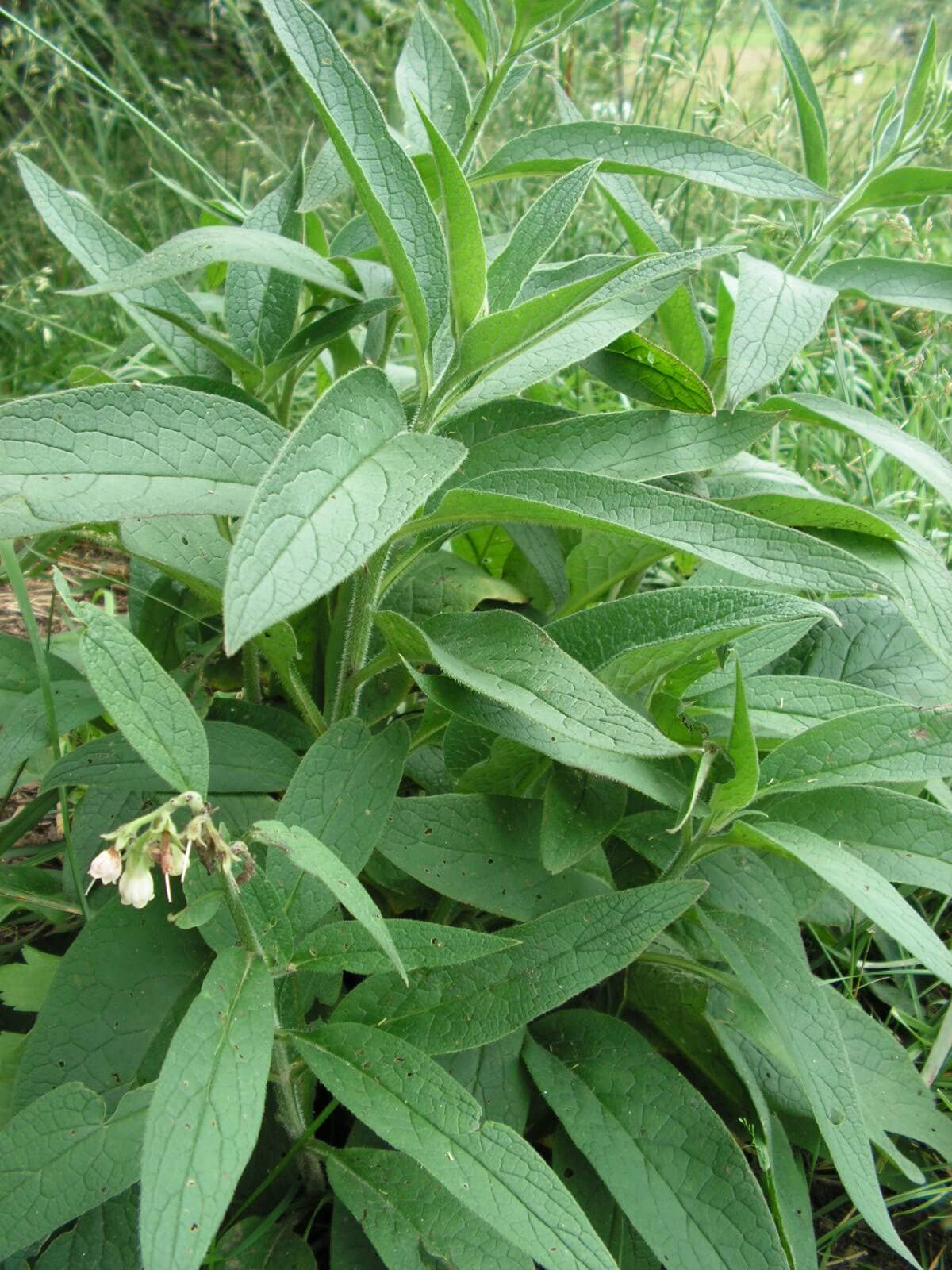

COMFREY
Symphytum officinale
A powerful medicinal herb and garden workhorse!
Comfrey is a bee-attracting herb which will quickly make a cottage garden look established. It loves dappled shade so don't use anywhere that only gets full sun.
We use Comfrey to feed the chickens and we just throw the leaves into the chicken run on top of our other organic compost. Comfrey is low in fibre and high in protein and is the ideal green for chooks.
Handy tip: We also feed our chooks by picking up 4 buckets of our local cafe's food scraps every Sunday.
Comfrey has plenty of potassium, nitrogen and phosphorous and is ideal as a good mulch, compost, and soil conditioner for poor soils if you don't have chooks. Just cut the leaves up and place on top of, or just below, the soil.
Comfrey is a vigorous perennial known for its large, hairy leaves and clusters of bell-shaped flowers, typically in shades of purple, pink, or white.
It's highly valued in organic gardening as a "dynamic accumulator," drawing up nutrients from deep in the soil. It's also famed for its traditional medicinal uses, especially for skin and bone healing.
We recommend planting it in a location where it can spread, as it can be quite prolific. It prefers moist, well-drained soil and can tolerate a range of light conditions from full sun to partial shade.
Comfrey is a fantastic plant for making nutrient-rich compost or liquid fertilisers.
PRICE: $6.00
SIZE: 5cm radius seedling
Comfrey
Symphytum officinale
Australian History
Comfrey originated in Europe and Asia and has a long history of cultivation for its purported medicinal properties and as a valuable garden plant. It was introduced to Australia by early settlers, valued for its vigorous growth and versatility, becoming a common feature in many traditional and permaculture gardens.
Australian Uses
In Australia, Comfrey is widely used in permaculture systems as a "dynamic accumulator." Its deep taproot draws up nutrients from the subsoil, which are then made available to other plants when its leaves are used as a chop-and-drop mulch, in compost, or to make nutrient-rich liquid fertilisers. Traditionally, it's been used externally in poultices and creams for skin ailments, bruises, and bone healing, though internal use is generally not recommended due to liver toxicity concerns.
Comfrey is excellent for chickens, providing a nutritious green feed that supports their overall health and egg production.
Australian Growing Guide
Growing Comfrey in your Australian garden is straightforward. It thrives in moist, well-drained soil but is highly adaptable to various conditions. Plant it in a location with full sun to partial shade. Comfrey can be planted from root cuttings or seeds. Once established, it is very hardy and drought-tolerant. Regular cutting of the leaves will encourage new growth and provide abundant material for mulching or composting. Be mindful of its vigorous growth habit, as it can spread readily.
Australian Landscaping
Comfrey's large, lush leaves make it a striking addition to a garden, though its spreading nature means it's best placed where it has room to grow, or in a designated "chop and drop" bed. It can form a dense groundcover and its flowers attract bees and other pollinators, adding to the biodiversity of your garden. It's often used at the base of fruit trees to improve soil and provide mulch.
Australian Companion Plants
Comfrey is an excellent companion plant for fruit trees and berry bushes, as it helps to enrich the soil around their roots. It can also be planted near brassicas or other heavy feeders to provide a continuous supply of nutrient-rich mulch. Its deep roots can also help to break up compacted soil.
Australian Disease Resistance
Comfrey is generally a very resilient plant and not highly susceptible to many diseases in Australian conditions. Good air circulation and well-drained soil will help prevent any potential fungal issues. Its robust nature makes it a low-maintenance and reliable addition to the garden.
